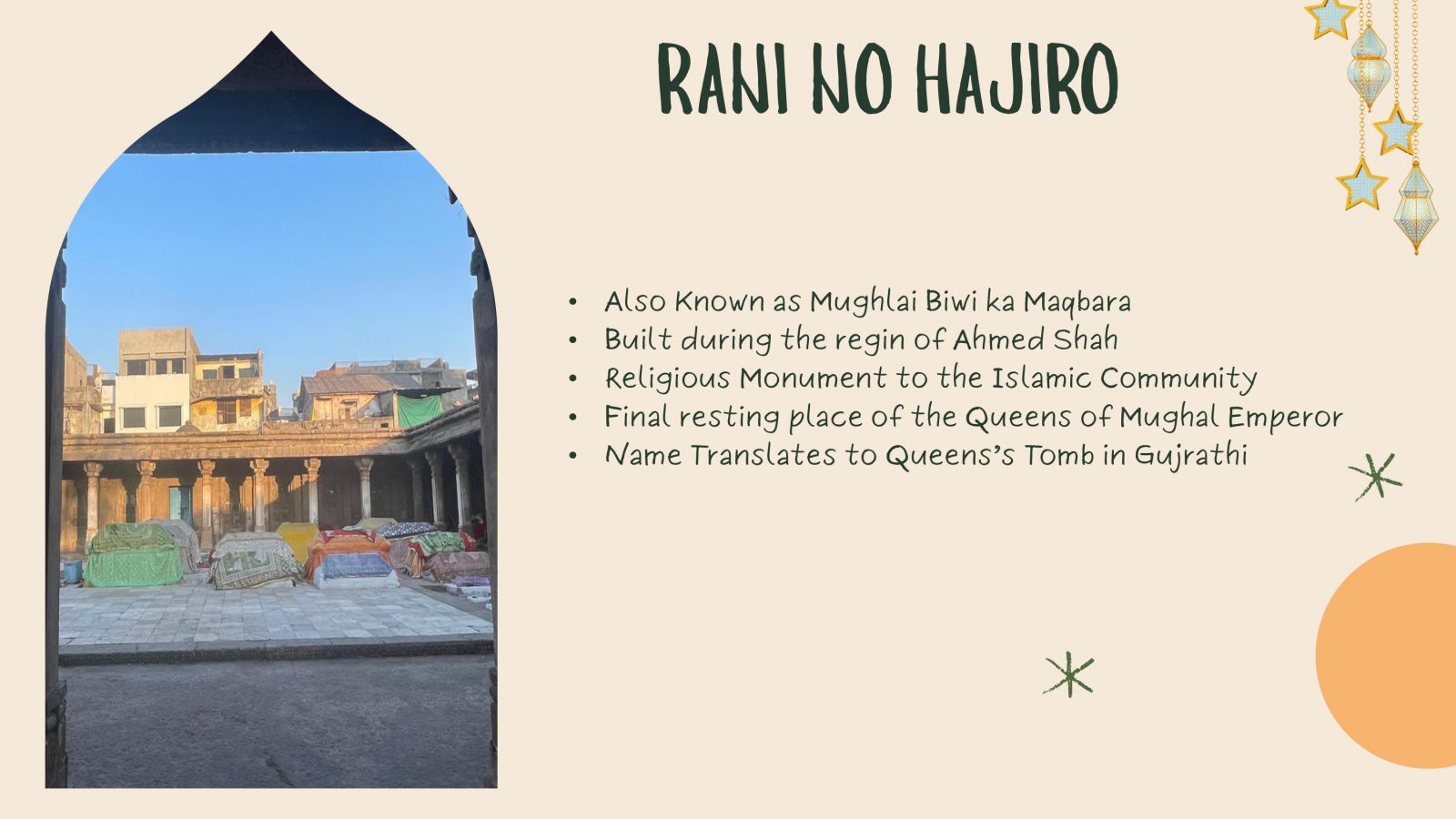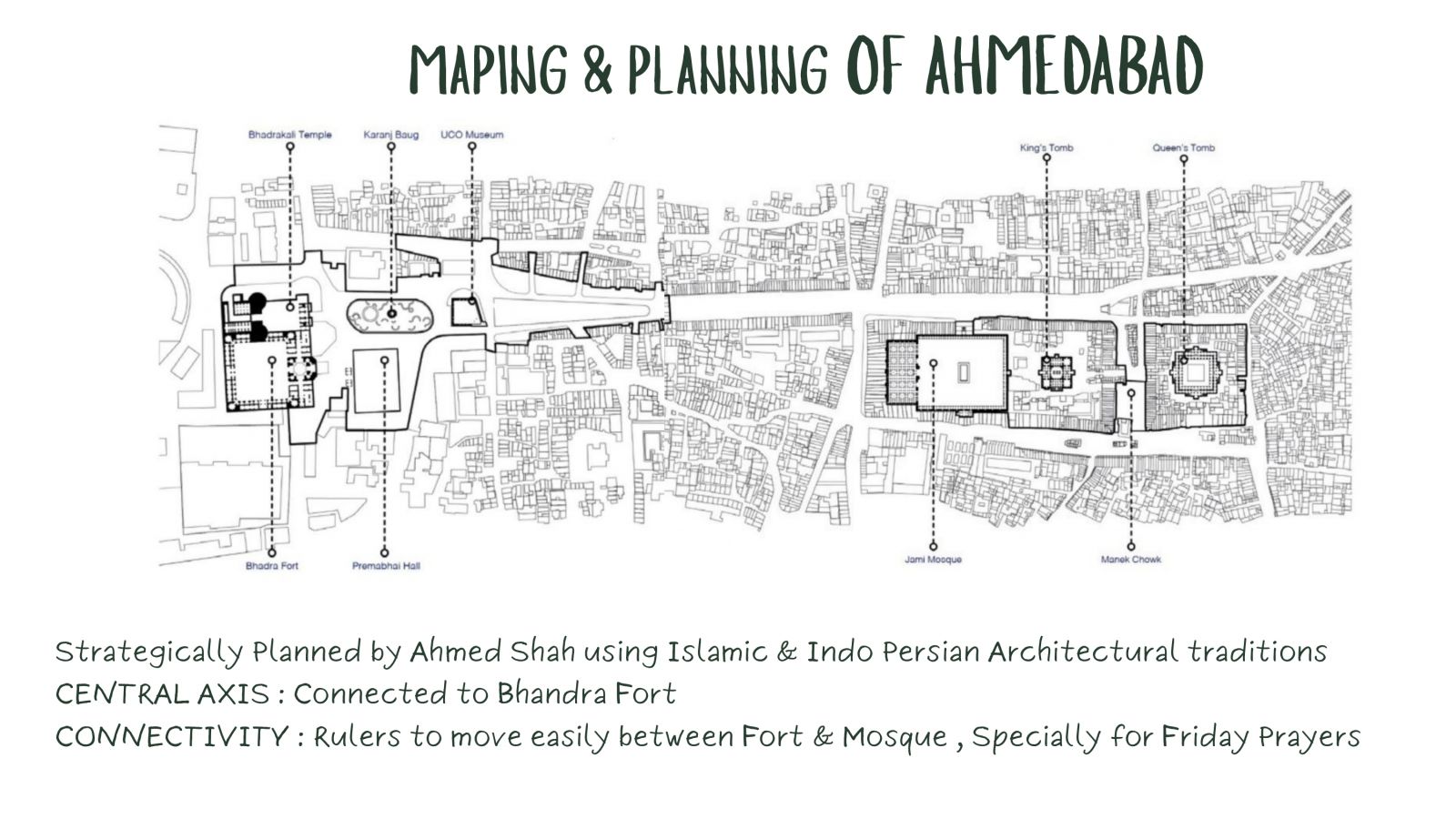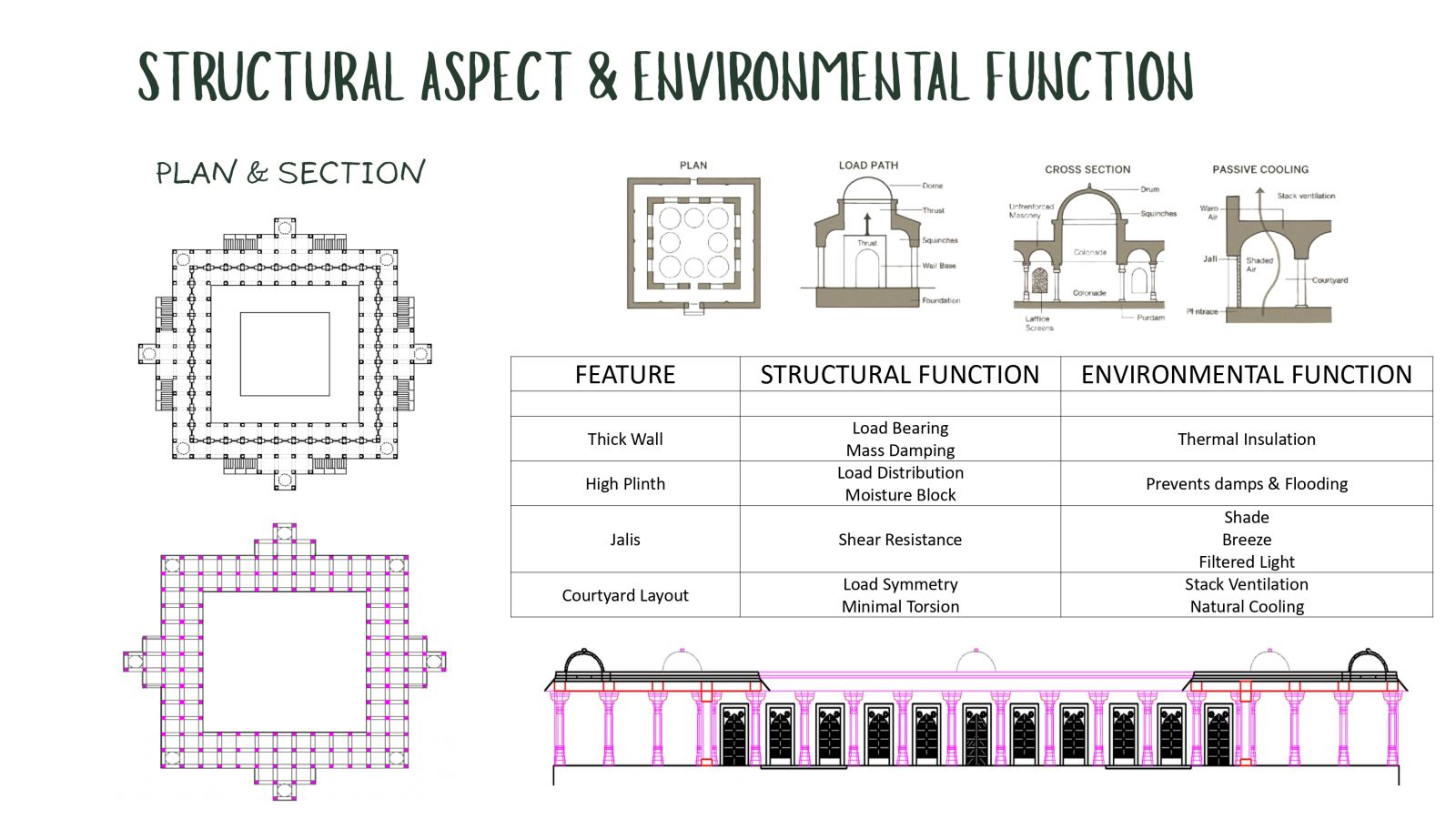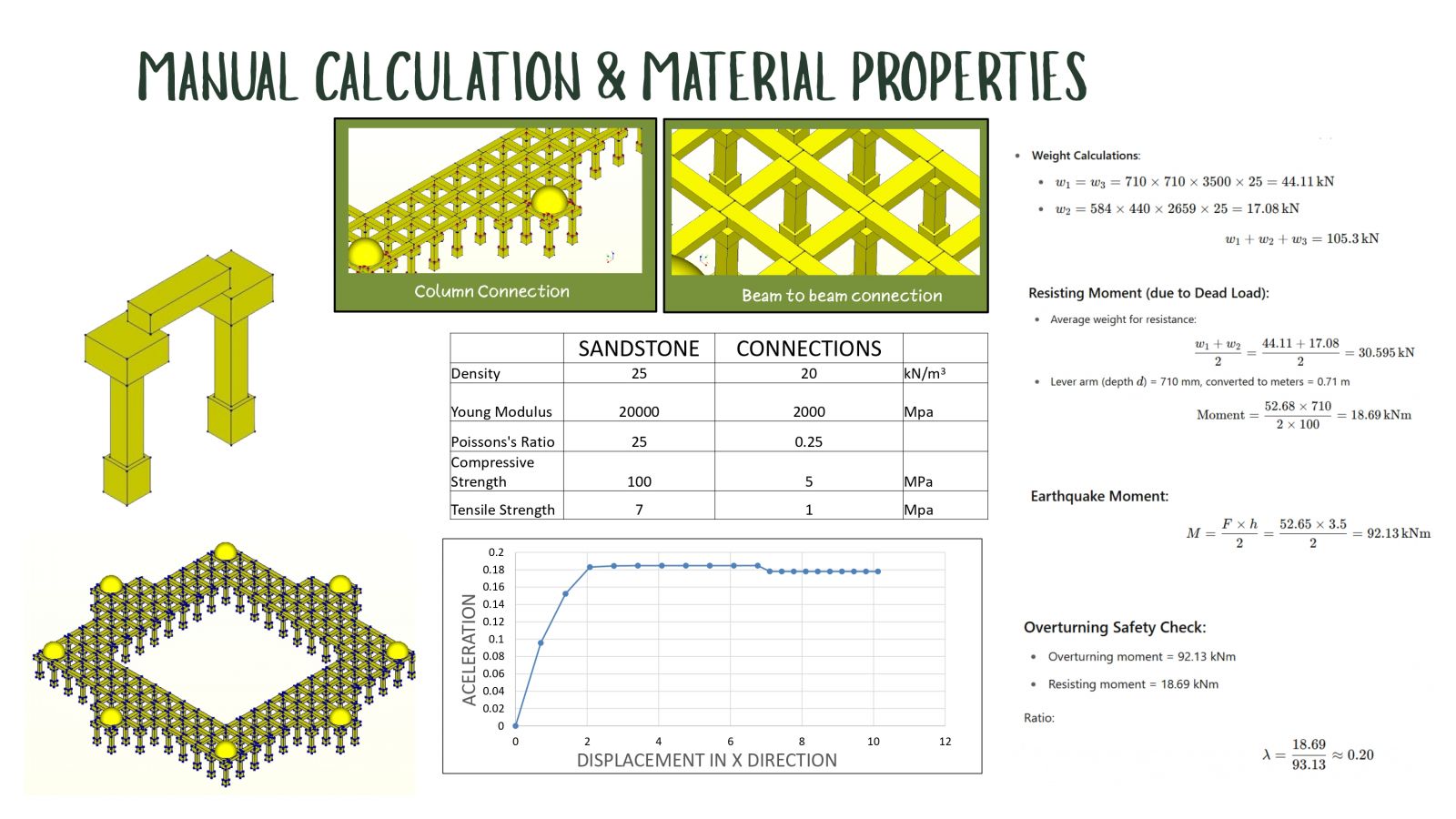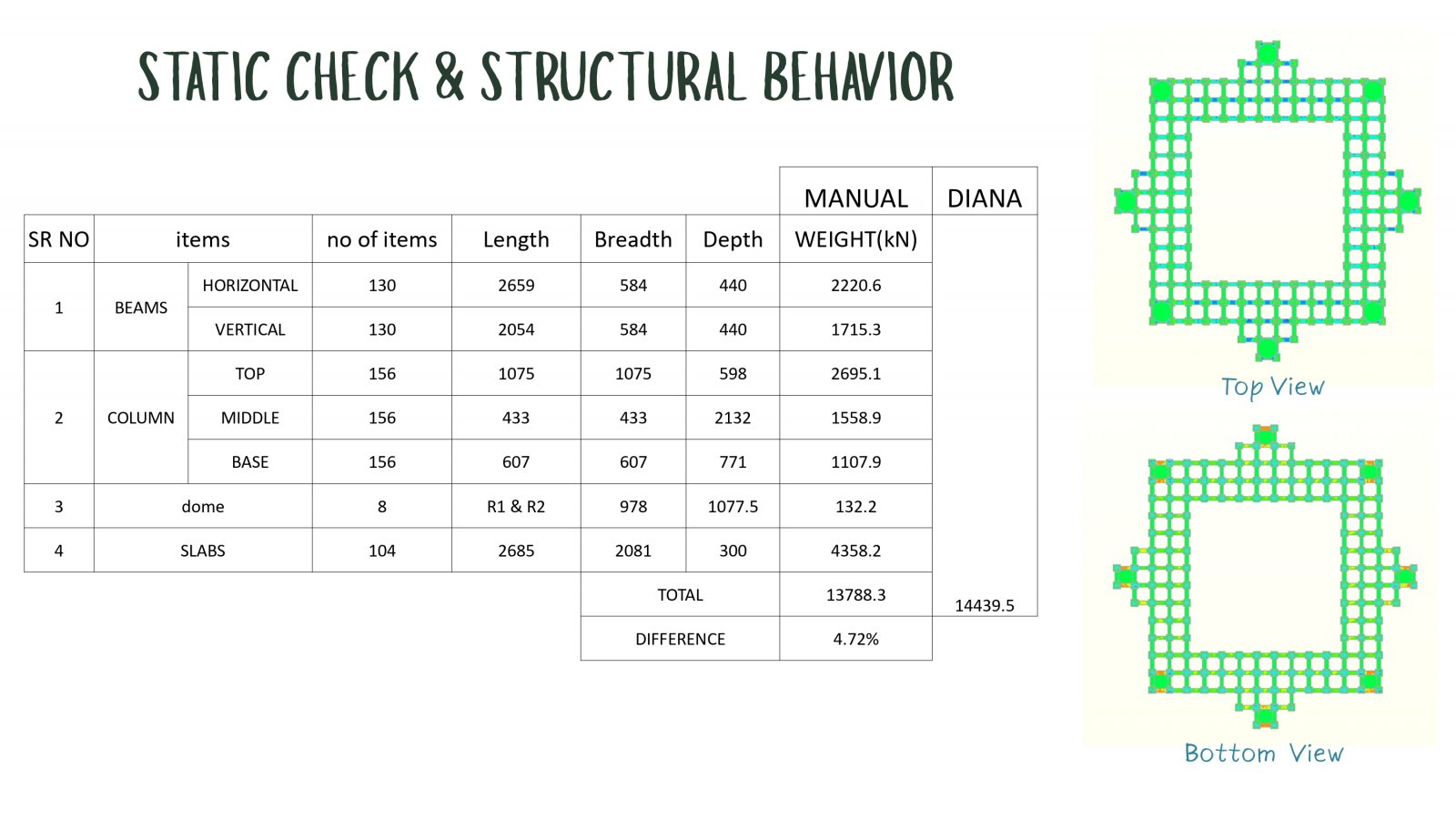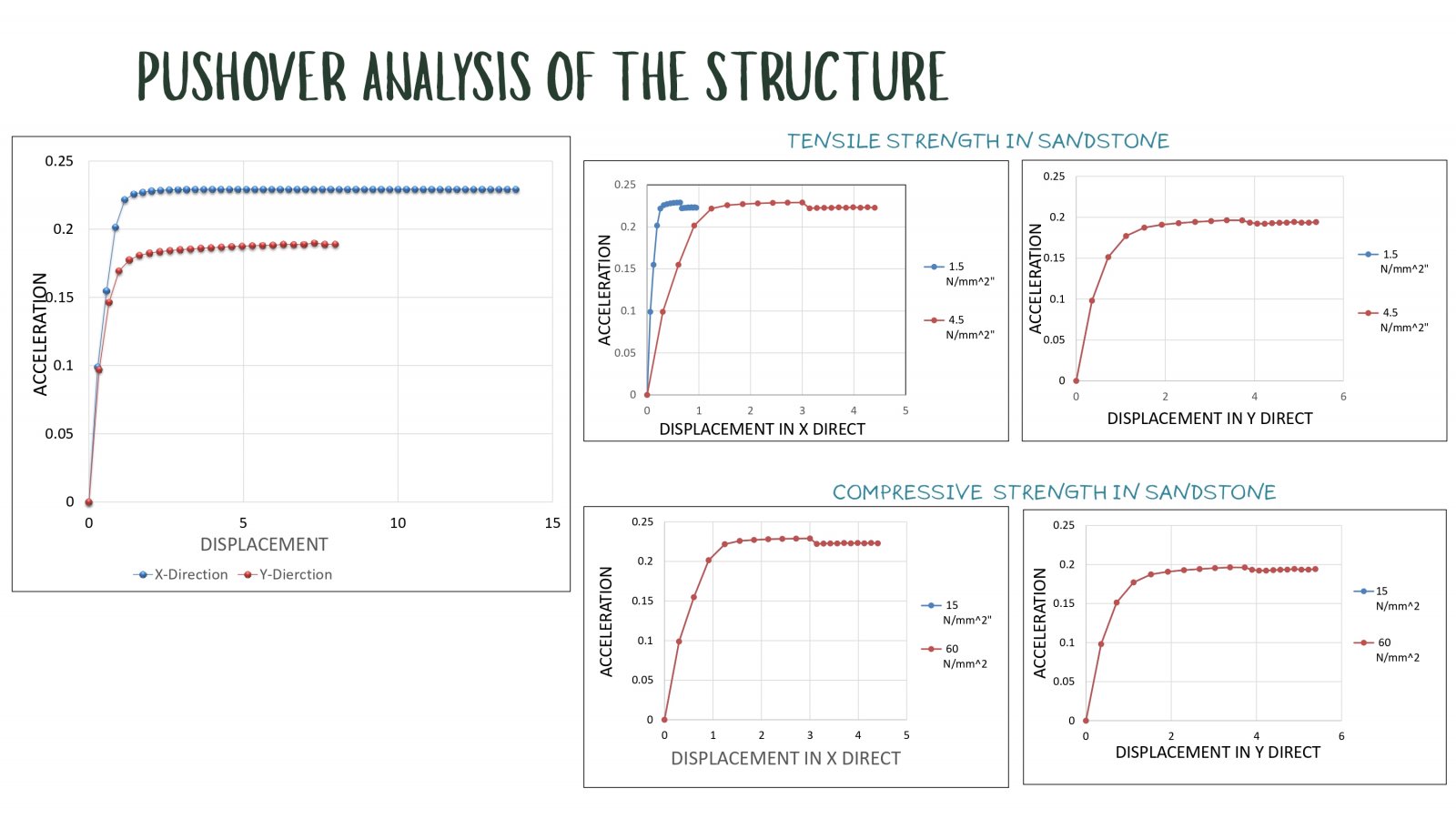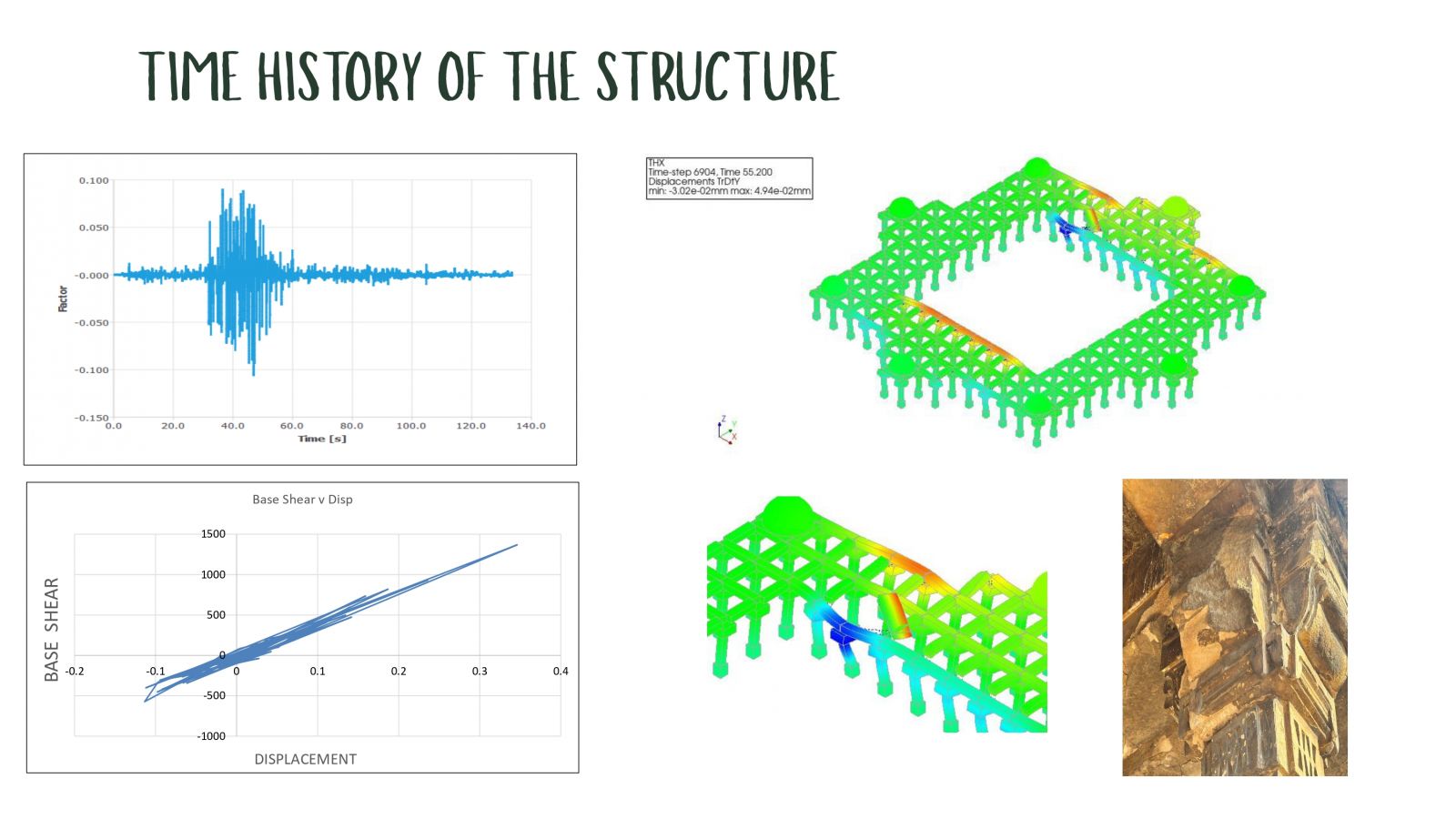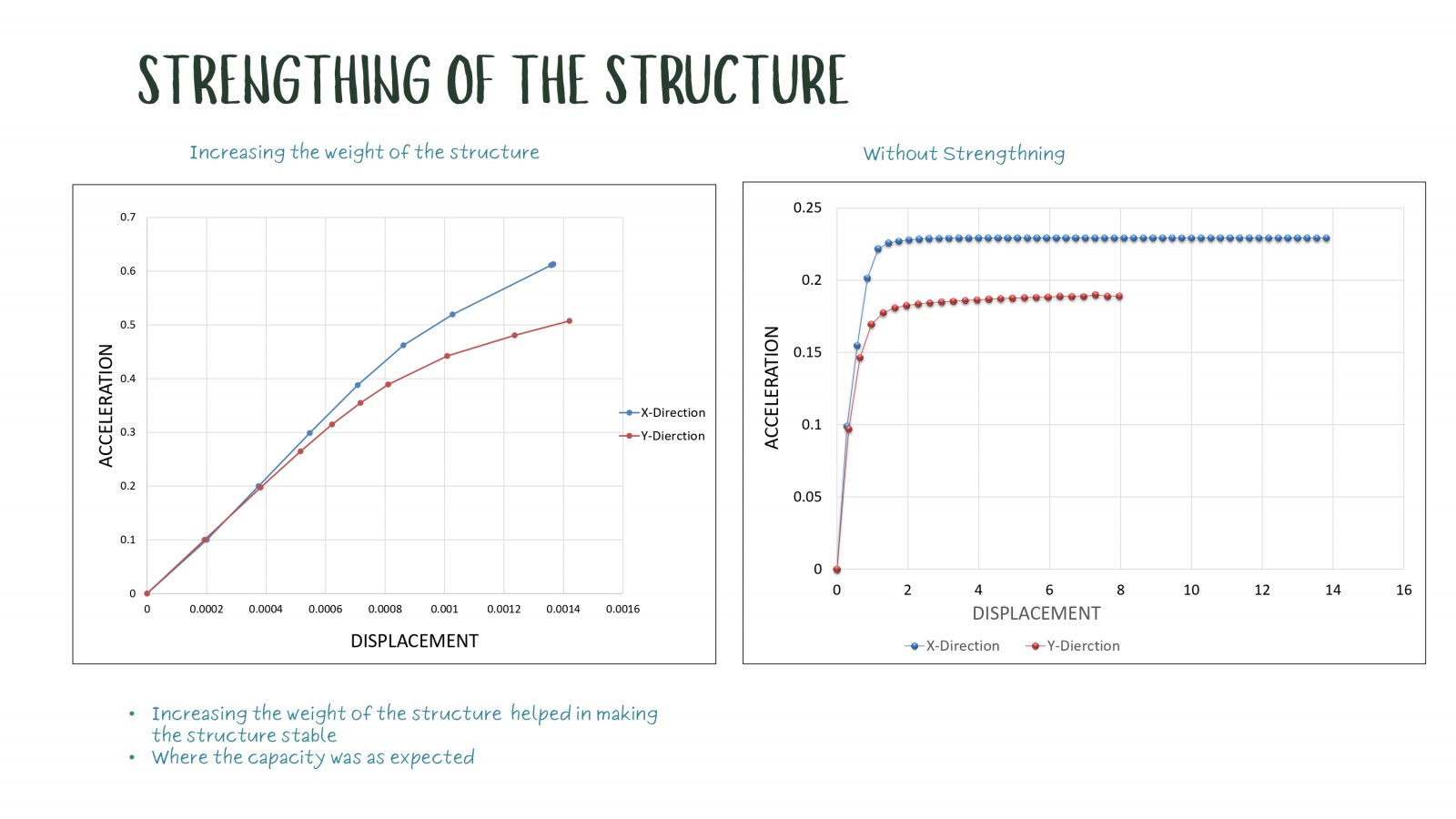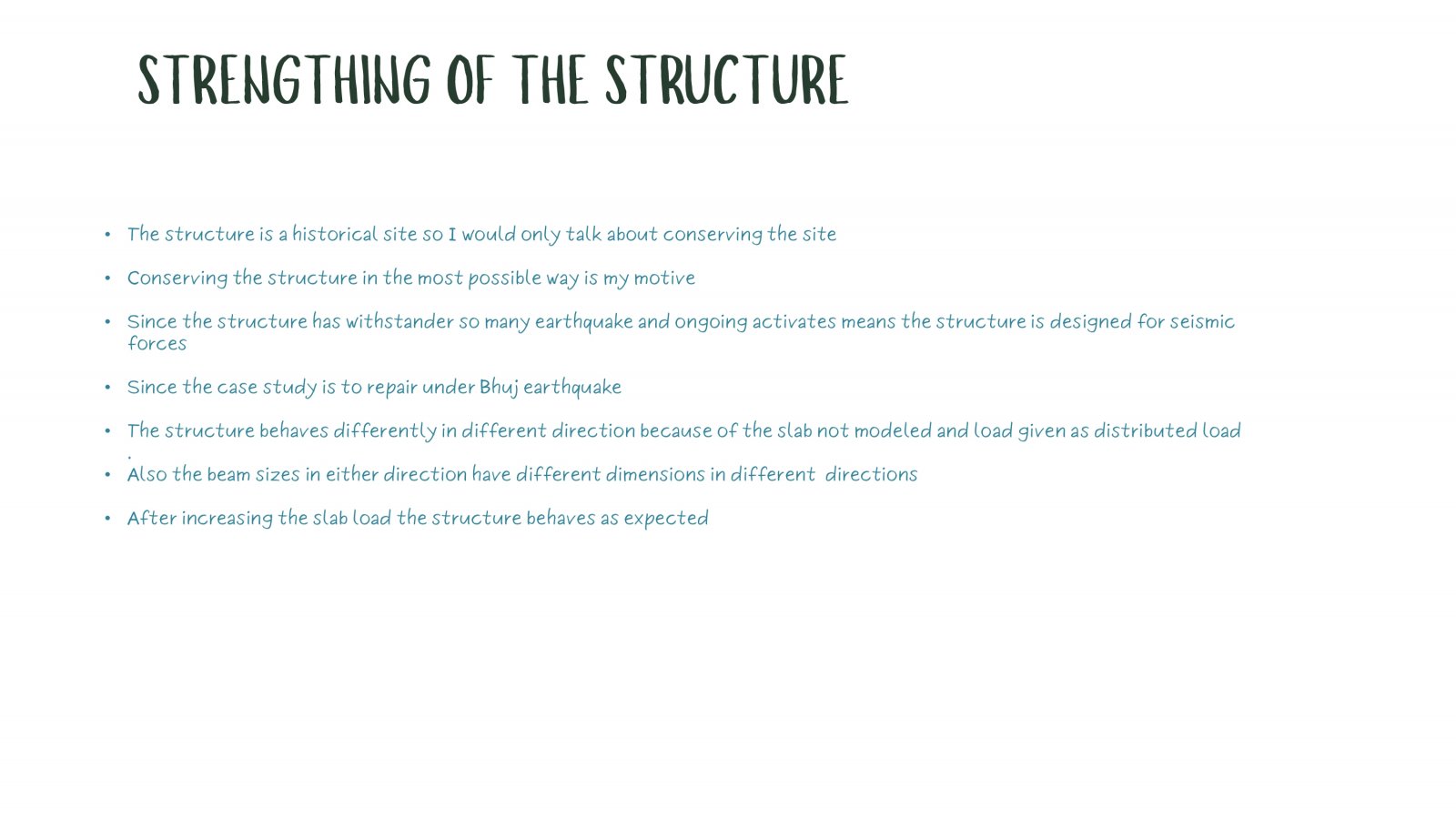Your browser is out-of-date!
For a richer surfing experience on our website, please update your browser. Update my browser now!
For a richer surfing experience on our website, please update your browser. Update my browser now!
This report presents a comprehensive architectural and structural analysis of Rani no Hajiro, a 17th-century tomb complex located in the historic walled city of Ahmedabad—India’s first UNESCO World Heritage City. Built as the final resting place for the queens of Sultan Ahmed Shah I, the monument exemplifies Indo-Islamic architectural elegance and urban planning principles. The study explores the historical context, axial urban alignment, symbolic and functional connectivity, and construction techniques that define the tomb's significance. Special focus is placed on the structural systems—such as the stone masonry foundation, post-and-beam construction, corbelled domes, and intricately carved jali walls—highlighting their dual role in structural integrity and climatic responsiveness. The report also evaluates the monument's seismic behavior, identifying both its resilient features and vulnerabilities, while proposing modern engineering interventions to enhance durability. Through this multidisciplinary lens, the report underscores how Rani no Hajiro integrates environmental sensitivity, spiritual symbolism, and engineering ingenuity, making it a vital component of Ahmedabad’s architectural heritage.
View Additional Work